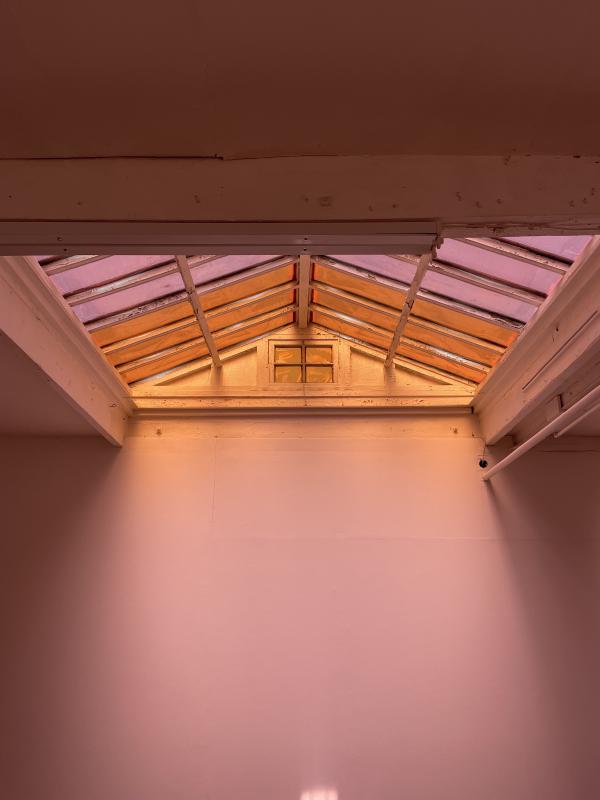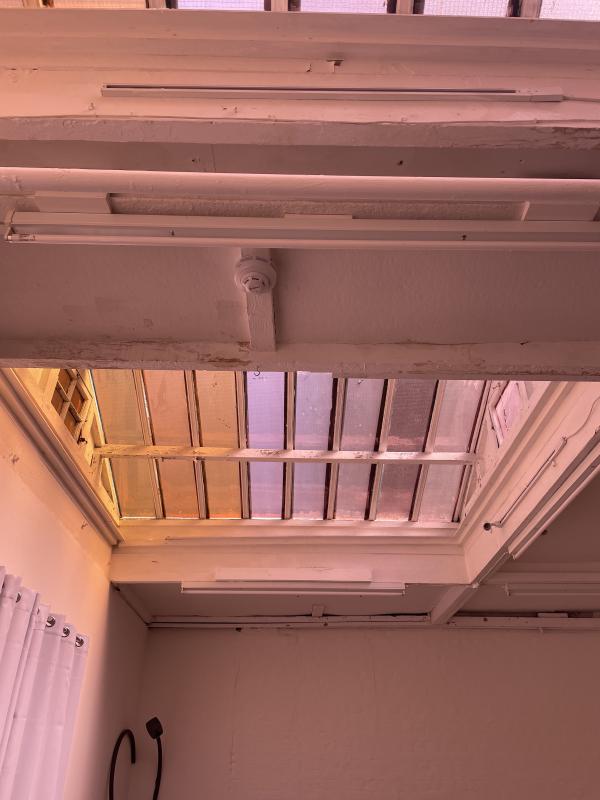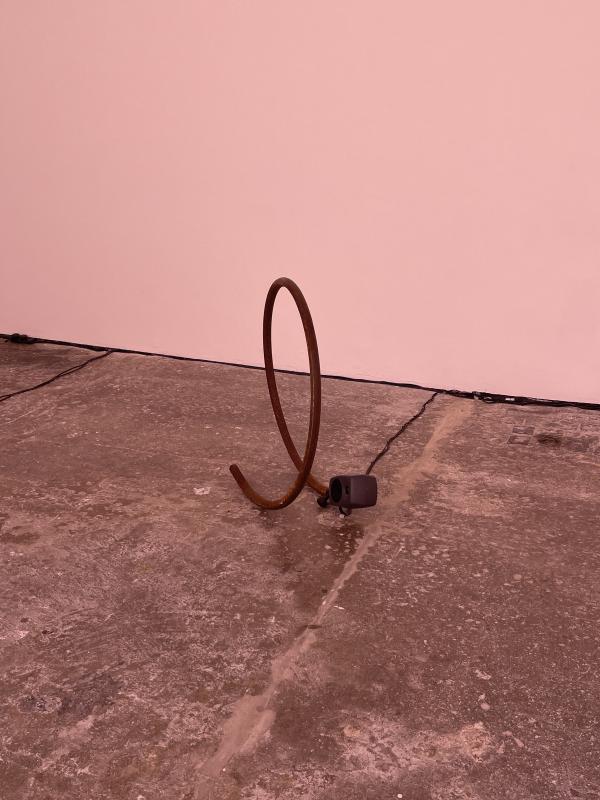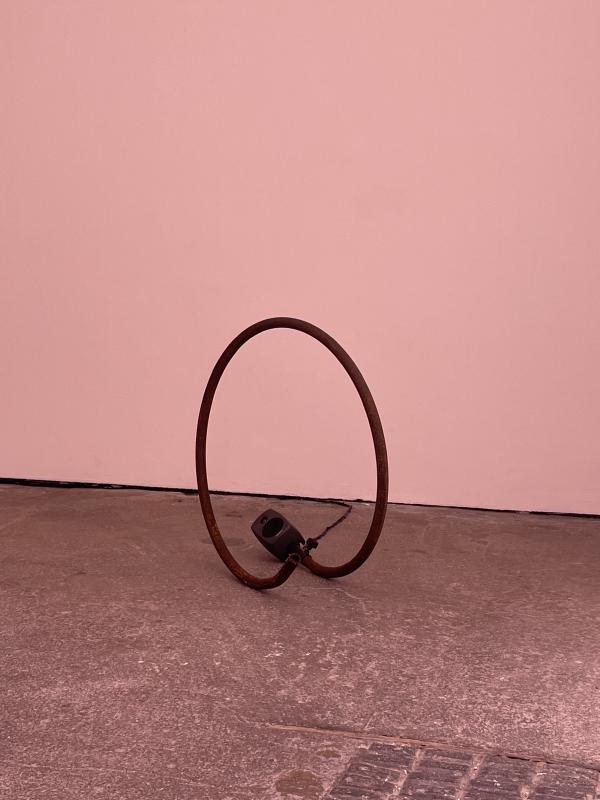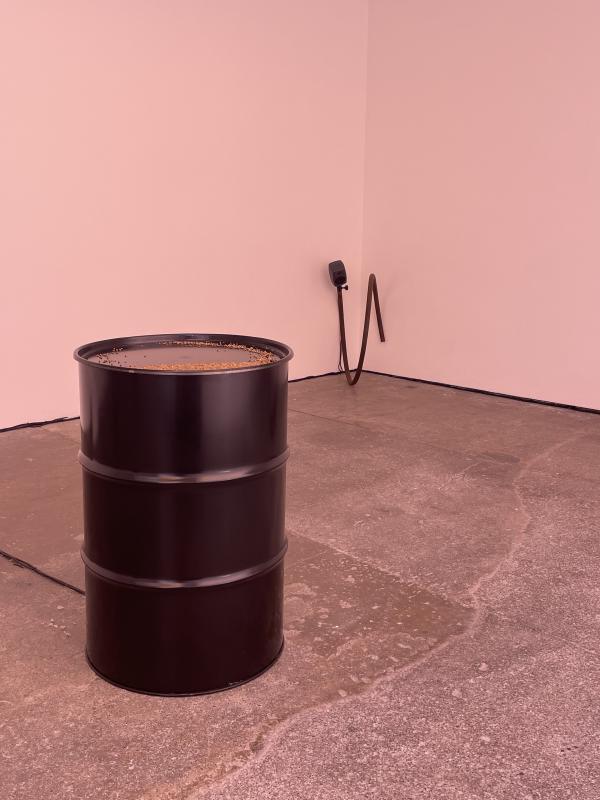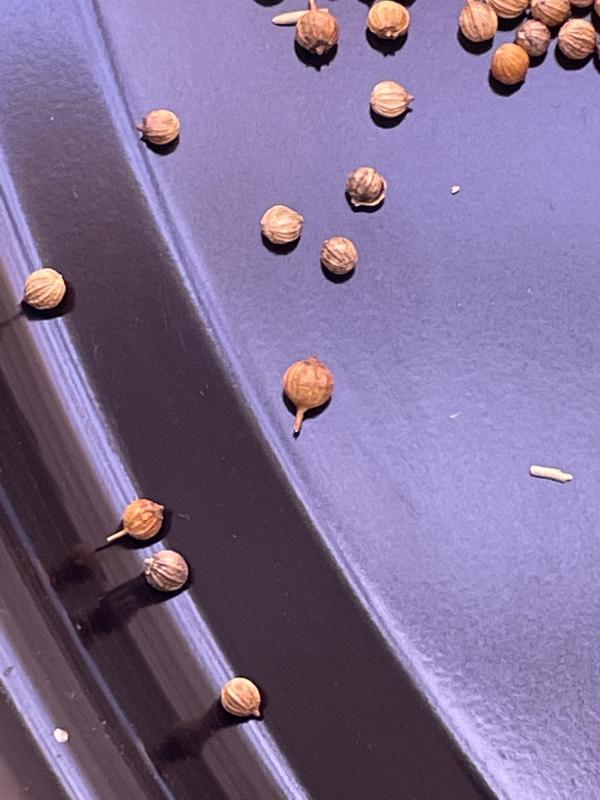Shenece Oretha @ Cubitt
ZM
Emoji summary: 🌱 🌘 ✨
I went alone, the only visitor passing through at midday on Good Friday. The fat bright sun was all high up, loud in the sky. I was wearing a dress the colour of the sky too, like so light and shimmery. I wanted to drift up and disappear into the far blue expanse, silverfish with no clouds to keep me pinned down. This happens every year, the first day I feel the sun on my skin properly properly. I turn inside out, I become a vapour, a ribbon.
I was at Cubitt to see Shenece Oretha’s Ah So It Go, Ah No So It Go, Go So! A heavy curtain parted and the gallery was opened out in front of me, butterfly split of a ribcage bent back. The space felt taut; not tense, just stretched out sideways. When I sat on the leather bench, my bare thighs made a hushed sound - of skin on skin and gently pressing. I experienced this show in the closed pocket of a moment, and after that in retrospect. I am past and present and telling you about it now because I want to write something that sinks into the mood and rhythm of this show.
In London, land is a type of gift. It is a rare and special kind of thing, so strange and non-existent. Newbuild towers spring up like blades of grass. First the carcasses appear behind high boards, then all of a sudden they have internal walls and light fittings, a sales and marketing suite. The protective film stays on the windows for far too long. I imagine myself abseiling down and peeling as I go, I arrive fresh faced on the ground in a cabbage curl of plastic. Land is a gift, rare and special. A garden is a ripe signifier, full with information: class, money and abundance. This show came out of a year-long residency on an allotment in North London. A gift, a gift; I am so happy to hold this fruit in my hands, so happy to try and feel the weight of it in my palm.
Hot noon out there, but inside it was nearly twilight. The light filtered through from a pitched skylight in the ceiling; two panes of glass propped up into a triangle like a greenhouse roof. The windows had been tinted dusty baby pink and amber orange. It made the light tumble down in thick streaks, heavy as the heat. Maybe on a cloudier day, it would have felt more like dusk. The window-sky would make shy, diffuse light and grey grainy shadows. But on that Friday, the light was a wash of colour sweeping out in a blush.
They say that nature loves a spiral. I guess it’s just the shape of something tight (compact) that’s loosening (unfurling), something exiting (entering). There were these metal curls that came up to my mid-thigh. Rusted, round and perfect, a shoulder-width gap between the ends. One side was weighed down with the head of a black boxy speaker, the other was cut blunt. Four of them all in the gallery with me, like noble companions. And two black metal drum barrels with little seeds spread out across their tops. Some seeds germinating, little white tails springing out like the speaker heads. Speaker and seed, containing all that latent information ready and willing to burst out, to scatter and multiply. But wait - wait for the sound.
I remember that I had to dig. A full body kind of labour, sweat across my back and chest. My hands tingled and blistered, the skin turned to callous, then peeled. It was like a reminder, a ghost sat in my open palm. It was labour I revelled in, creative - labour that involved the act of creating. As I sank the shovel in, pulled out thick, dense clumps tangled with grass and the tiniest spiders. My body was here, in mud.
I remember being surprised that growing things was so simple. I felt like there should have been more steps, more complexity. But seeds went in and shoots popped out. London clay makes leggy carrots, beautiful courgettes. Tomatoes can grow under a clouded sun. You can even plant mango stones; if you soak the stone for 2 weeks before planting, a purple shoot will wind out in a spiral. Then like alien foliage, like CGI dream, almost overnight a beautiful purple leafed plant will appear.
I wasn’t alone in that greenhouse theatre. It was me, the speaker seeds and the metal drums. They weren’t objects, weren’t representations of objects, they were bodies, present and tethered to the ground. They spoke to me, singing or whispering.
shaking seed heads / witnessing / passing knowledges / in communion seed seed seed seed seed seed seed seed seed seed seed seed […] adorn the roots / adorn the whole thing in earth / we plant we bury flowering flowering flowering flowering flowering flowering flowering flowering flowering […] she held her palm of seeds to her ear listen / remember / the vibration on the ground / beginning […] destroy / the museum and the greenhouse have a shared history scatter scatter scatter scatter scatter scatter scatter scatter scatter scatter looking through the glass pane / transported here
There were many voices throughout the sound. It was Shenece, but also Jamaica Kincaid, Grace Nichols, Dorothea Smartt, Valerie Bloom. Shenece gave voice to them all, in snippets and clips, like a vessel like a seed head shaking and scattering. And there was bass, rumbling and chronic undertone - that was Shenece too. So I sat within the chorus of her sound, above and below. She drew a breath and from the throat, sound waves travelled out, hit the drum and shook the seeds, rattled through the air and atmosphere of the gallery, into my body. It felt so careful, so sensitive, a beautiful breathtaking thing. I closed my eyes. I sat with my arms bearing down against my legs, head low. My feet were planted on the glossy gallery floor; growing roots that snaked out to find - ahhh something.
Well they say that plants grow better when you are kind to them, they say that plants can hear you when you speak to them. I put a bluetooth speaker in the shed, I made a spotify playlist for the seedlings. I went out every morning and every evening without fail. A devout pilgrim with a spray bottle. I misted them with the hard london tap water and whispered ‘i love you i love you i love you i love you’. John Cage, Music for Marcel Duchamp // Shouse, Love Tonight // Tove Lo & HAIM. I think I saw them dance, their bodies twisting and waving in time to the beat.
The museum and the greenhouse have a shared history, two colonial containers that kept objects/plants that didn’t belong (to them, to here). But Shenece’s flex, turning gallery into greenhouse, isn’t one of critical anger. It is an act of tenderness, sheltering these reluctant transplants from the hostile weather, from the cold and the storm. It is an act of care, in the face of being here and having to deal with it. It is futile, stoic. And maybe the sky is a kind of magic. A magic that only artists can unleash on a willing viewer, transformative and tender, a gentle caress. It is an i love you i love you i love you, coming to the green expanse knowing that there is work to be done, knowing that there is beauty in the mud and the sky.
I am sat at my desk, trying to find a way to understand how I burrowed into that show. I think it burrowed into me too, I felt its heavy company underneath my skin when I left. It was a happy heaviness, the familiar weight of warm ground, a warm body. If I hadn’t burrowed in, I would have just evaporated. I am trying to make sense of it still, so I have no parting words of my own, only Shenece’s. Roots are all part of trying to find a language.
When I left, there were clouds pasted over the sun. The wind waved branches, stretched them out to meet me with a hushed prayer. My feet were heavy against the pavement, slammed down against cobble stones and grit. I didn’t drift up to meet the far blue expanse. I dragged my heels and thought about how deep I’d have to go, how deep beneath the pavement squares until I hit something that looked like solid ground.
Ah So It Go, Ah No So It Go, Go So! has, unfortunately, already closed. But you can catch bits of documentation on the Cubitt website, as well as an interview between Shenece and Languid Hands, and a text written in response by Kondo Heller.
